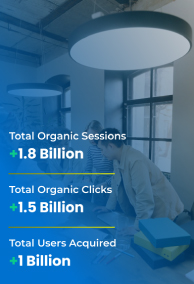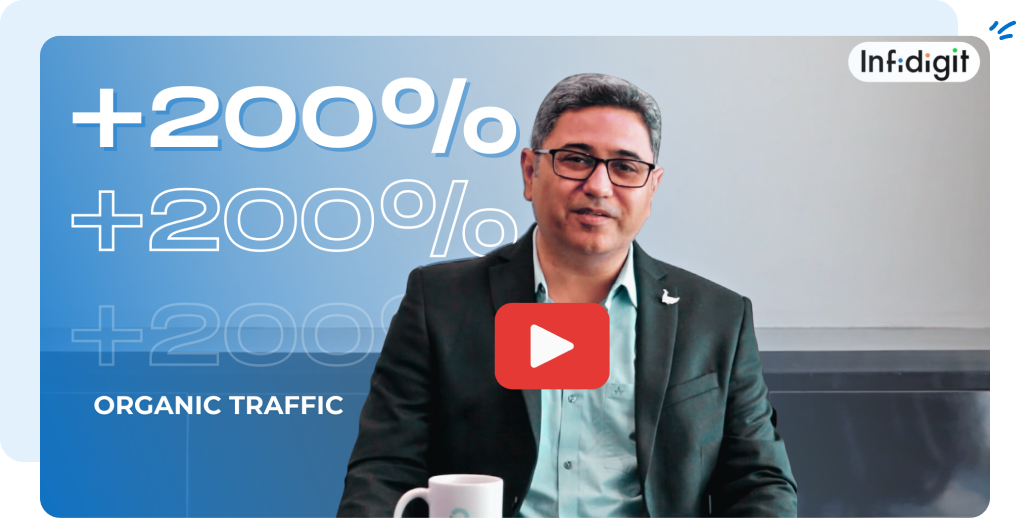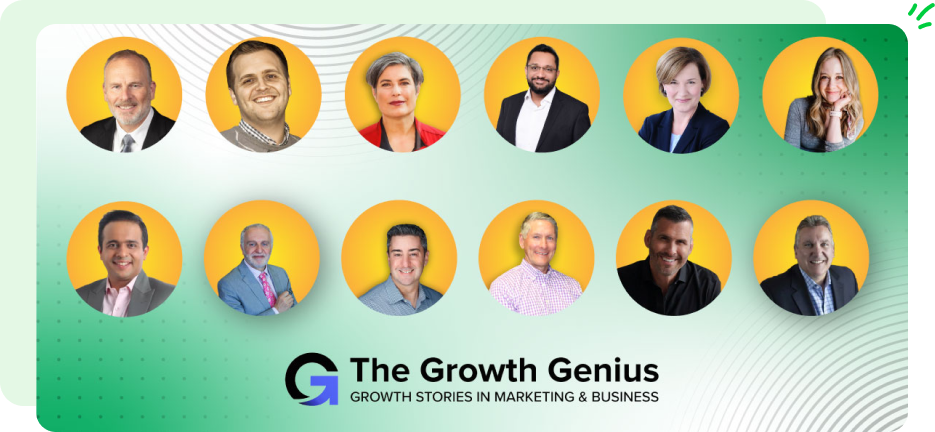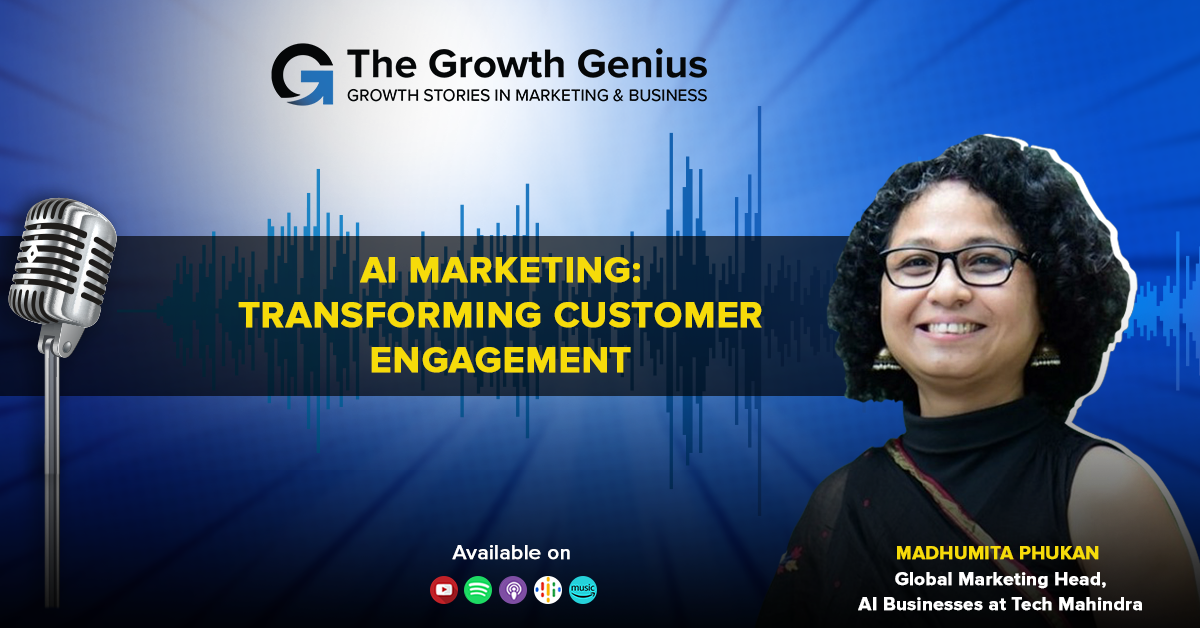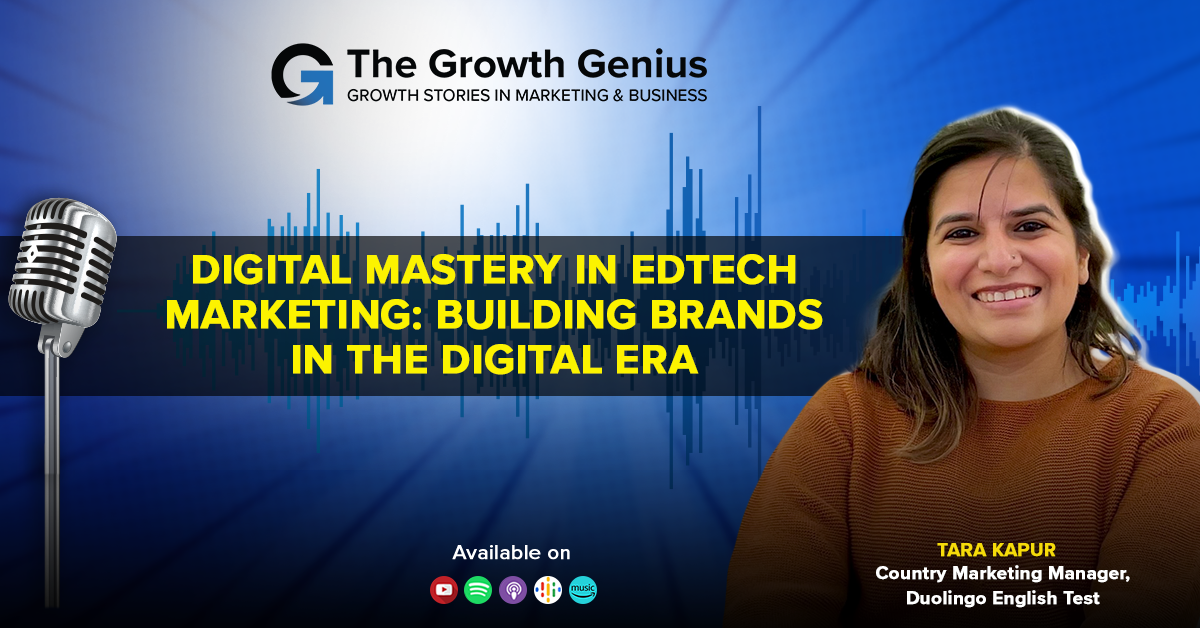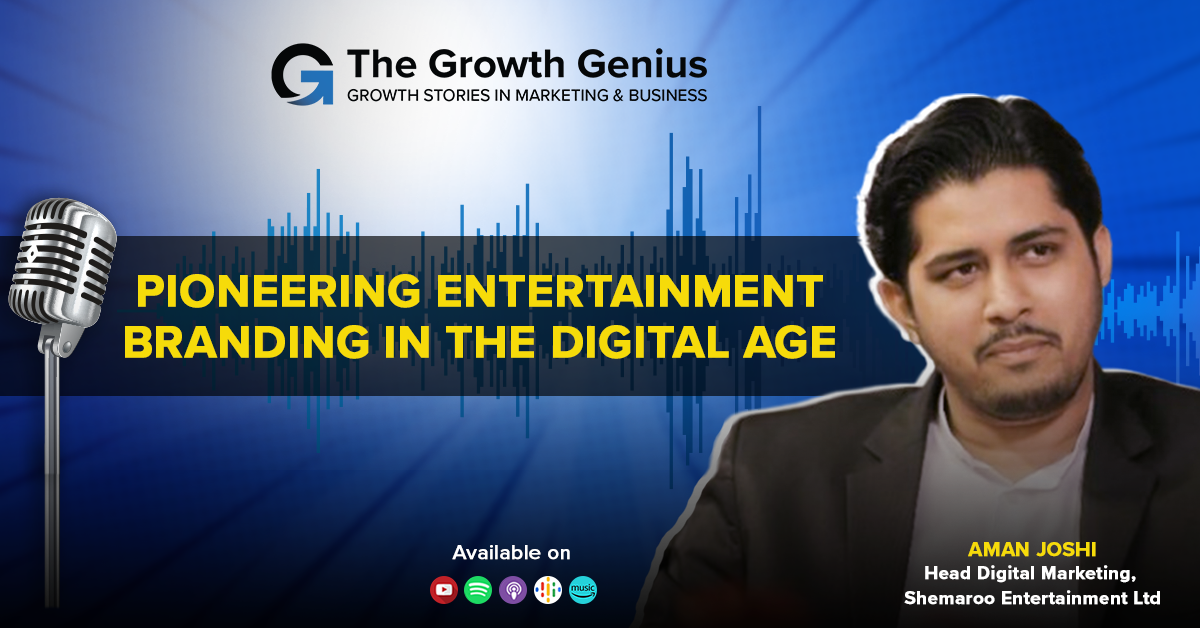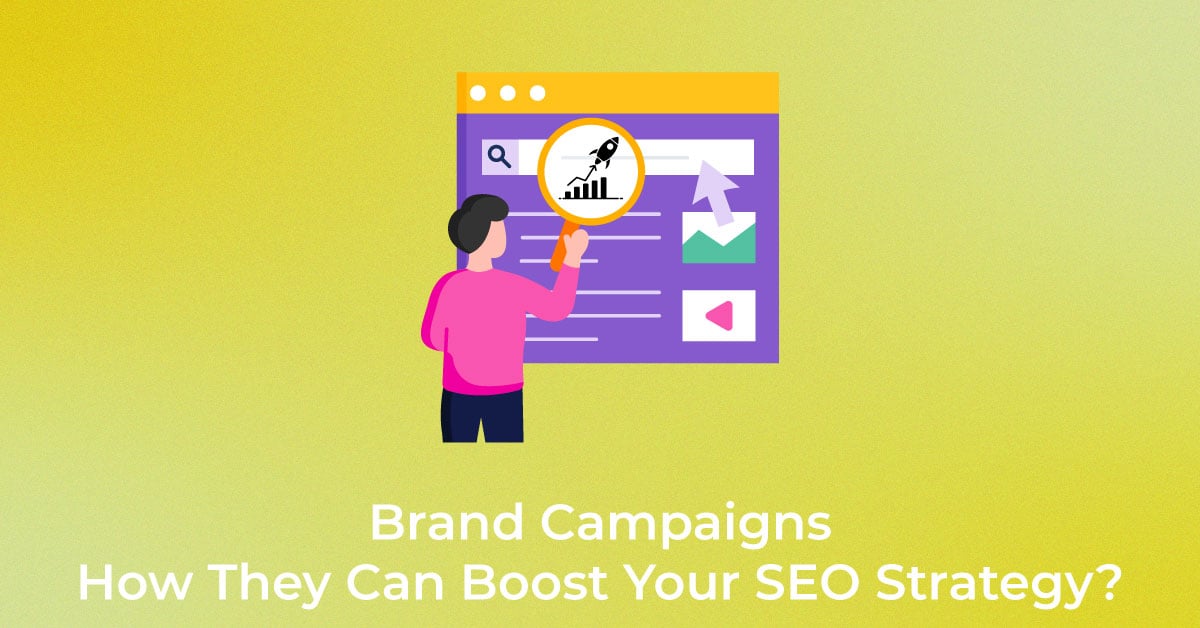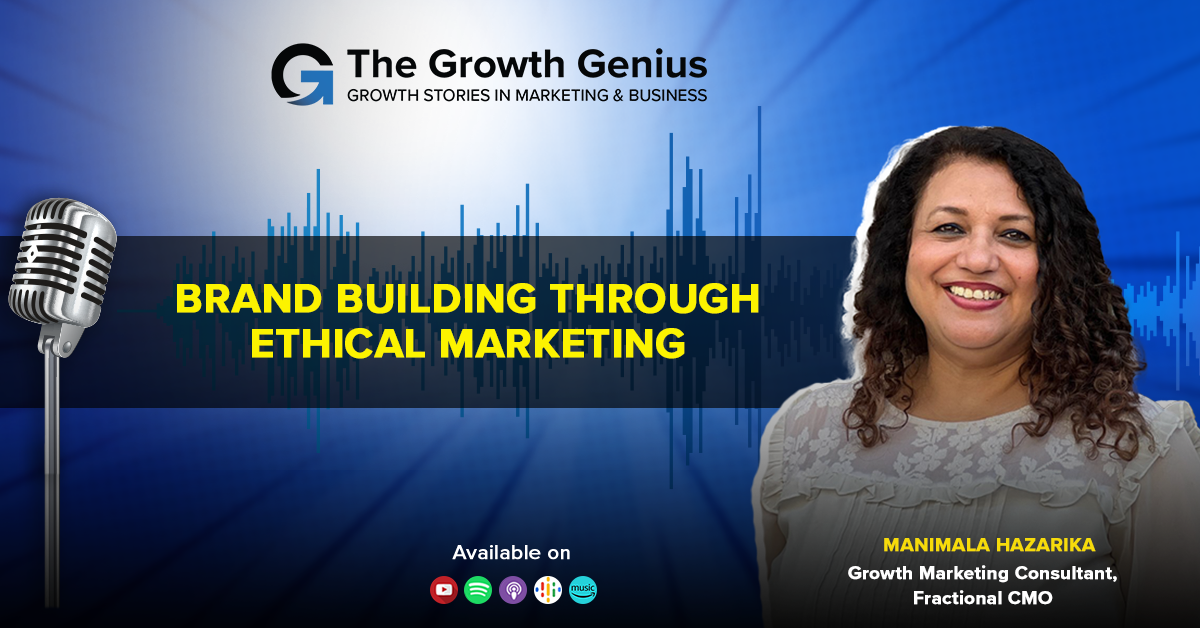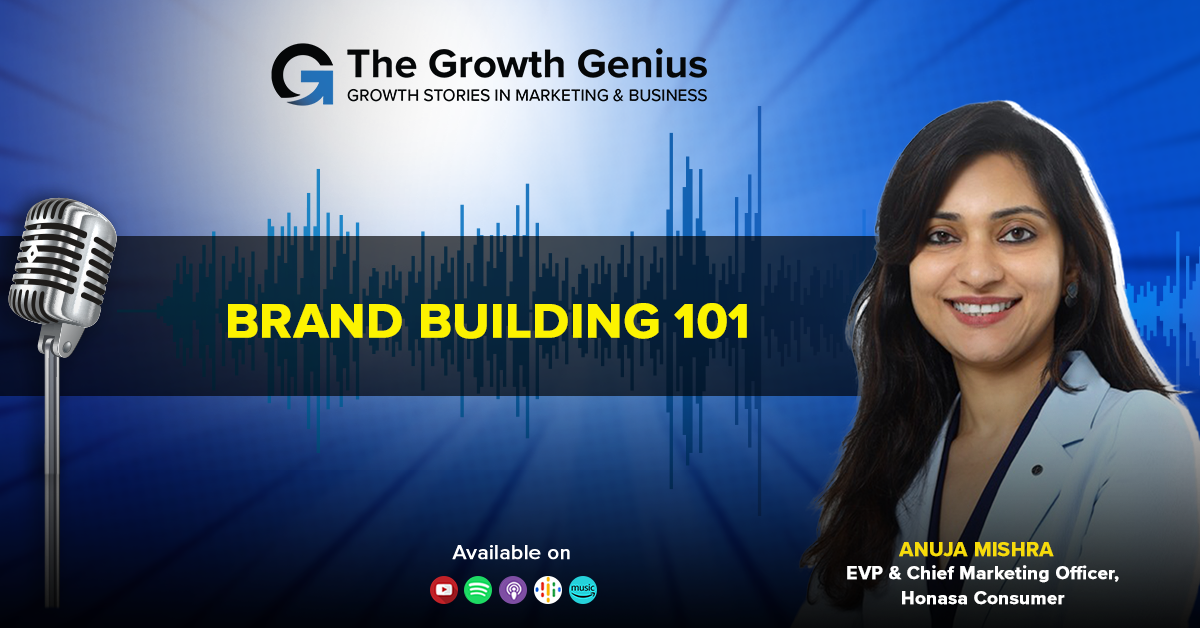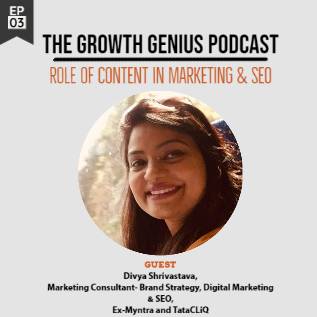
Witness an Increase in your ROI
Unlock higher rankings, quality traffic, and amplified conversions through tailored award-winning SEO strategies.
Summary
In the podcast episode titled “Role of Content in Marketing and SEO,” the experts at Infidigit discuss the significance of content in driving marketing and SEO strategies. They emphasize that high-quality and relevant content plays a crucial role in attracting and engaging the target audience. The podcast delves into the various aspects of content creation, including keyword research, optimization, and distribution. The experts also highlight the importance of creating content that aligns with the user’s intent and provides value. They stress that content should be tailored to meet the needs of the audience and should be optimized for search engines to improve visibility and organic traffic. Overall, the podcast emphasizes the pivotal role of content in successful marketing and SEO campaigns.
Key Take Aways
8 Key Takeaways for a Digital Marketer from this Blog:
- Importance of High-Quality Content: The blog emphasizes the significance of creating valuable and engaging content that resonates with the target audience.
- Content as a Branding Tool: Content plays a crucial role in building brand awareness and establishing a strong brand identity.
- SEO Optimization: The blog highlights the need for optimizing content for search engines to improve organic visibility and drive more traffic to the website.
- Keyword Research: Digital marketers should conduct thorough keyword research to identify relevant keywords and incorporate them strategically into the content.
- User Intent: Understanding user intent is essential for creating content that meets the needs and expectations of the target audience.
- Content Distribution: The blog emphasizes the importance of promoting content through various channels, such as social media, email marketing, and influencer collaborations.
- Content Performance Analysis: Digital marketers should regularly analyze the performance of their content to identify areas of improvement and optimize future strategies.
- Content Updates: Updating and repurposing existing content can help improve its relevance, keep it up-to-date, and attract more traffic.
Overall, this blog highlights the crucial role of content in marketing and SEO, providing digital marketers with valuable insights and strategies to enhance their content marketing efforts.
Unlock higher rankings, quality traffic, and increased conversions through tailored award-winning SEO strategies.
Elevate your web presence by Infidigit’s SEO solutions.
Unlock higher rankings, quality traffic, and increased conversions through tailored award-winning SEO strategies.
In episode #3, Growth Genius, Divya Shrivastava, will talk about the importance of content in the world of marketing and Search Engine Optimization (SEO). She will share her experience of working as a marketing consultant and how she successfully created marketing campaigns for brands, such as Myntra, TataCLiQ, Diageo, and Unilever. So, join Divya and our Host and founder of Infidigit, Kaushal Thakkar, as they decode the role of good content and how you can rank your websites on SERPs.
Read Transcript
Some of the important points that are covered in this segment:
- What is the Role of Content in SEO? (3:45)
- How does Content Marketing help in Customer Engagement? (7:21)
- What are some of the best practices for Content Creation? (9:25)
- How to measure content success? (13:50)
- Which are the tools to measure Content Marketing success? (15:02)
- How to get in the Content Marketing Industry? (20:05)
- What are the opportunities in the Content Marketing Industry? (23:02)
[00:21] Kaushal: This is episode number three of the Growth Genius Podcast powered by Infidigit.
Welcome friends to the Growth Genius Podcast. My name is Kaushal Thakkar, I’m the founder of Infidigit and your host for the show. Each week, I interview geniuses who have created phenomenal digital growth for their organization. We discuss the key techniques and share insights to help you learn and create your own growth story. Content for the digital is like air for a human body. Without content, the entire digital system would not be existent.
Content could take multiple forms, text, images, videos, audio, etc. Today we are going to discuss the topic: ‘role of content in marketing and SEO’. And we have with us a growth genius all the way from Australia to share her story with us. Divya has created growth stories at several organizations like Myntra, TataCLiQ, Diageo, Unilever, and several others while she was in India. Now she creates growth for multiple brands as a marketing consultant for brand strategy, digital marketing, and SEO while she resides in Australia. Let us learn from her the role of content in marketing and SEO. Divya, thank you so much for being on the show. How are you doing today?
[1:50] Divya: Hi, Kaushal. Thank you very much for inviting me on the show. I’m doing very well. And I hope the same for you too.
[1:58] Kaushal: Yes, perfectly well. And how’s the climate out there in Melbourne, Australia?
[2:03] Divya: Melbourne is like a place which shows four kinds of weather in one particular day, so it could be sunny in the morning and suddenly you see clouds, heaps of clouds and then it’ll start to rain. So it’s like four kinds of weather in one day.
[2:21] Kaushal: In Mumbai, I’m also experiencing it right now in the morning it was a little sunny and bright. Now it’s a little cloudy here. It seems it will rain anytime.
[2:29] Divya: Alright it’s winter here, so we are enjoying the winter.
[2:33] Kaushal: Oh, really nice! Sounds good.
[2:34] Divya: Yeah.
[2:37] Kaushal: So Divya, without much ado, I’m going to get into the main set of questions and would love to start with the question about you itself. So for the people who do not know you, please help them with your introduction.
[2:51] Divya: Thank you Kaushal. So I’m Divya Shrivastava and I’m a marketing manager for strategy and creative agency in Australia, and I have been working in the field of marketing for almost 11 years now and have worked with organizations, as you mentioned, like Unilever, Diageo, Myntra and TataCLiQ, while in the last seven years of my career, I have driven brands’ equity and awareness by creating digital-first strategy and ideas. And one more thing about me is that I’m very passionate about knowing and digging much deeper into consumer insight and through it creating and nurturing brands. So that’s a snapshot of me.
[3:37] Kaushal: Oh wonderful, nice to know that. So Divya, what is the role of content in terms of SEO according to you?
What is the Role of Content in SEO?
[3:45] I would like to start my answer with a quote by Margaret Atwood, a very famous writer, and he says that you are never going to kill storytelling because it’s built-in the human plan and we come with it. This quote is equally relevant when it comes to content as well. The role of content in SEO is a non-conventional way of storytelling about brands, businesses, and products. If you step back and look at our own journey and knowledge path, we can confidently say that content is what inspires us, reflects our state of mind and helps us in taking action. So objective-driven contextual stories are what content in the digital world is.
When it comes to SEO, I believe a good SEO strategy hinges on how well the content strategy is planned and executed. From search ranking to generating clicks, they all depend on how well the keywords are mapped in the content, and how well the content maps to the desire, emotions, and journey of the consumer to deliver an outcome. An SEO optimized content is an essential component of successful content marketing is what I believe in.
[5:04] Kaushal: Perfect, really well said. And how would this particular thing differ from the role of content in marketing? Would it be the same or this would be very different activities?
[5:16] Divya: I wouldn’t say it’s very different. I would say that content marketing is a strategic marketing approach, which is focused mainly on creating and distributing relevant and consistent content to attract and retain a very clearly defined audience. And this ultimately to drive profitable customer action. You know, instead of pitching your products or services like a salesman, what is actually seen gives us the better result is through content you can provide a relevant and very useful context to your customers to help them solve their issues. If you look at the changing era of consumerism, brands which are empathetic and reflect on the requirement of the consumers are the ones that are thriving.
So for every marketing effort, whether it is traditional media or new-age digital, the success of any idea is completely dependent on how well the content is created and communicated irrespective of the platform. It could be PR, it could be social media, TV, commercial, SEO, digital, they all need good content. And I would actually like to quote an example over here, and I believe HubSpot is one of the companies which can be a very good example of content marketing.
They were one of the earliest adopters of content marketing and have built an incredible customer journey that helps bring prospects to the point of purchase when they are ready. So irrespective and to answer your question, irrespective of whether it’s digital media or traditional media, the communication strategy might differ, the platform may change, but the role of content remains extremely important and remains as the pillar of any communication.
[7:10] Kaushal: Nicely said. And you mentioned a little bit about sales. So, are you saying that okay, content marketing will help you more in terms of pulling the customers and stop pushing your product towards the customer?
How does Content Marketing help in Customer Engagement?
[7:21] Divya: Exactly see you remember when I was a kid, and even you can trace back your childhood and we all will see that that was the time when brands and products were pushed down our throat. Now it’s the time when consumer demands and are very clear of what exactly do they want. So, it’s the other way around. And that is why it’s not just about pitching your products like a salesman. First, we have to take a step back and understand that what exactly the customer is looking for. And that is why if you see selling products through Instagram stories has become a huge thing these days because it’s about creating content that is very attractive people like it, and it’s banked on the needs of the consumer. So yes, things are changing and have changed already in fact.
[8:14] Kaushal: Yeah in fact and while we were also going through some of the numbers, we realized that the returns on investment ROI from the digital mediums are much, much higher as compared to the traditional mediums which believe more in that push form of marketing. So that’s something which is clearly seen with data over here as well.
[8:35] Divya: Absolutely it’s optimized the spends are extremely optimized, going to the right set of audience and creating higher ROI.
[8:45] Kaushal: Perfect. And even the life of the campaigns would be much higher when you’re going and publishing some content, let’s say on a website or somewhere else.
[8:53] Divya: Yeah, absolutely. The only thing that we have to keep in mind is to refurbishing it. So, because content these days has to be very quickly adapted and keep on improvising on it to match to the latest trend. So yes, it has longevity as long as you keep updating it with the latest trends.
[9:16] Kaushal: So, one thing you mentioned over here is rehashing the content, any other best practices for content creation that you would like to suggest?
What are some of the best practices for content creation?
[9:25] Divya: I actually follow 10 principles. And I believe that these are the 10 important pillars of creating any good and relevant content. And the first and most important is to have a very clear purpose. You don’t want to create content just for the sake of having it. You always want to have a reason for why you are creating it. The second important pillar is to know your audience. Why is it important? Because no matter how well written the content is if it is not targeted to the right audience or does not cater to the right sentiments of the audience, then it is not relevant. And it absolutely loses its first pillar, which is the purpose. The third, while all of these exist is to be business relevant.
Don’t create content that doesn’t match with your business goals, it might be trendy, but if it is not relevant to your business, if it is not relevant to your business goals, then it won’t reach to the right people. The fourth pillar is to provide value. So content is not just about product definition, it’s not just about selling the product. Again, don’t use the content as a hardcore sales pitch, but add value over there and that is why again, another great example would be how Indiluxe from TataCLiQ is doing so they are immensely interesting content and then pushing the product slowly weaving it into the value that the products are going to add to people’s lives, so that is why provide value to your content. The fifth important aspect would be optimizing the title.
However, there is a catch 22 here. And we all have experienced a lot of times that when we are reading articles or content online, we see very interesting and catchy headlines, but when we go down in detail and start reading the content, in the first paragraph, itself you lose interest. So while it is important to optimize the title have a very interesting title, but it’s extremely important at the same time to create a sync between the title and the main content. The sixth pillar is the format of the content, which you actually mentioned in your initial introduction. And I very strongly believe that it’s extremely important to find a balance between text, images, videos, and other upcoming trends in the content to keep it relevant to the audience. The seventh pillar, which is again… this is more transactional is to include a call to action, a lot of content very interesting, very well written is on the purpose, solves your business goal, but in the end, it doesn’t leave the consumer with the idea of what to do next.
So, I have read it, I have gone through the products, but what am I supposed to do? So that call to action is extremely important in every content. Link building is another aspect that I believe should always be there in any good content. So whether it is an external link or it is or it could be internal pages and posts within the website that you link. The second last pillar which I try to ensure that it is there in the content is the social sharing strategy because that’s where most of the consumers are these days, not necessarily that it has to be a casual social platform, it could be something like LinkedIn as well. So there has to be the whole drive of engagement and creating chatter into the content. And last but not the least, keep it updated with the latest trends, relevant topics, and changing needs of the consumer. So these are the 10 pillars that I suggest.
[13:26] Kaushal: Really interesting. I like the way you have arranged it also. It’s very sequential in nature, purpose, audience business, relevance, value, optimizing title, format, call to action, link building, social sharing, and keep it updated. Will remember that for sure thank you! Perfect moving to the next question, how do we measure content success?
How to measure content success?
[13:50] Divya: Very interesting question largely the success of the content is measured on the basis of objective of the content. However, in general, there are three parameters that I follow. The first one is brand awareness code. This is measured through the website’s traffic generated through the content, the number of page views, video views, downloads, social chatter. So, these metrics help us evaluate that how much brand awareness have we generated through the content. The second parameter that I follow is engagement through the content, which could be via comments, likes, shares, forwards, etc. And the most important, which is the most relevant for any business is the sales and revenue generated through the content. So according to me, these are the three pillars or the parameters of measuring success.
[14:59] Kaushal: That’s good. So, when it comes to revenue, is there some tool or something which you suggest that could be used to measure the content success? Something like Google Analytics or…
Which are the tools to measure Content Marketing success?
[15:02] Divya: Yes, so Google Analytics to trace back the entire customer journey. So how many people would have come through the content, the links in that content, and then see that how many conversions has it generated? So yes.
[15:16] Kaushal: Okay any other tool that our audience should use when they’re writing the content or for measuring this content other than Google Analytics, which you would recommend?
[15:28] Divya: Overall I am a big fan of a couple of tools HubSpot, being one of them. Grammarly is another, Hotjar, Canva, Yoast actually has come up recently very well with SEO plugins for WordPress, and Google Optimize. So these are some of the tools that I would recommend.
[15:51] Kaushal: Perfect that should help. Divya any growth story which you have experienced and which could be shared with the audience, it would be enlightening to have some real-life story coming from you directly.
[16:08] Divya: Very, very interesting question Kaushal yes, actually in my current assignment, which is with a global online gaming and sports betting brand, I had seen how right content strategy can actually impact the business and revenue in a very positive way. And through the right keyword and content strategy, I have seen triple-digit growth for the brand in Australia, India, Malaysia, and Thailand region thanks to the Infidigit team. Also, you know, the bigger challenge here was that we know that this industry is an extremely regulated industry. And yet, there are a lot of apprehensions around it and especially in Asia where there was a social taboo around this genre and this industry. We have seen a lot of strong sentiments around it. And also thanks to COVID when people are locked in their houses and their lot more time that they have at home, so people have apprehensions they want to invest their time on to online gaming and sports betting. But since there are not many of guidelines available, so people have apprehension as to how to do it. There are questions about rules, do’s, and don’ts. And through the right content strategy, we tried to solve for these apprehensions we created a robust content strategy that helps consumers in understanding what this is about, how to do… how to content then more details of what and what to do and what not to do and what to expect from your the games that you are playing. So, details about each and each and every game explaining them that how it works, so that helped us get a lot of consumers and it helps us increase the website visits, which absolutely helped in turn, increasing the revenue for the brand.
[18:17] Kaushal. Thanks, Divya for sharing that wonderful. And Divya you have been working with several large brands like Myntra, Tatas and now working with this assignment in Australia, is the content strategy different across this organization or would you summarize it to be same:
[18:38] Divya: I would actually refer back to one of your previous questions wherein I mentioned those 10 pillars of creating content or the best content. I would use the same points to say that no matter which market country or industry you are catering to, as long as those 10 pillars remain the same your strategy, the basic pillars of the strategy remain the same.
However, what changes is the approach for each of these may differ from one brand to industry to region or to country. It’s just like the laws of communication, you know, where the basic principles remain the same. It’s just the language dialects and mannerisms which change. Say, for example, certain countries have a very casual way of communicating with consumers while other brands would be very sophisticated about how they talk to consumers. But the main important aspects of objective-driven, including the CTA, creating engagement in the content, so those basic 10 pillars remain the same across the globe.
[19:48] Kaushal: Perfect very well said. So now we know what is common, what’s different between the content strategies behind these large brands, thank you and if somebody wants to get into the content marketing industry, what would be the best way to do that?
How to get in the Content Marketing Industry?
[20:05] Divya: There are certain steps that I would recommend. I would say that start by building your writing skills. Don’t assume that just because you have an English or journalism degree that you are ready for web writing, it requires a different style and plenty of practice. It’s not just about being very good in English. You can also upload your writing to tools such as Grammarly or Hemingway editor for a quick grammar check. Sometimes grammar rules such as ending sentences with a preposition are deliberately ignored when writing for the web because you don’t want to write such a proper grammar that you start to alienate with your customers. So learning all of the cues is important. What also is very important to know your writing genre and style. Not everybody is cut to write fashion articles, while not everybody is cut to write very technical tech-oriented articles. So it is very, very important to know the genre of your writing.
So that you excel in the area where your passion lies and where your expertise lies at the same time. The other important thing to follow is to develop your research skills. For every content, it is important to research about the topic, know the sentiments around it, to create the best optimized and relevant content. Last, but not the least, you have to be creative when you’re writing the content. So the content has to be written in such a way that it is engaging, and it’s very interesting to read. Please remember that the audience for the content be it tech or any other type of content, they all want to read something which is informative, solves their query, and at the same time interesting and engaging.
So, I don’t want to read something which is about my new phone it’s so tech-oriented that I lose interest completely in the jargon of technology. So, the right balance is extremely important. So, this is what I would recommend.
[22:18] Kaushal: Perfect and you used a really interesting word passion. I see many people they get onto a particular job so they first find a job and then realize that hey, this is not the genre of content, which I was interested in writing this is not quite what my passion is. And then they feel disconnected from that particular thing. So yes, ideally, I like the way you said that okay, find your passion first or which genre of content that you would prefer to write. And definitely, once they identify that particular thing, then they can build their resume or build their profile accordingly and then look out for a job.
[22:52] Divya: Absolutely, yes.
[22:54] Kaushal: Perfect. Any quick ways to find opportunities that are relevant in the content marketing industry?
What are the opportunities in the Content Marketing Industry?
[23:02] Divya: I would say there is never a quick solution to anything. But yes, the best way to start would be to start your blog, reaching out to a lot of… start writing so LinkedIn again, has become a very important platform to be seen and visible and engaged. So start publishing as much as you can over there and build a lot of conversations around your content. So this could be a quick entry while applying for jobs on the job portals is something that definitely one has to do. But this is something that is more important than just applying for the job.
[23:38] Kaushal: True and yes nowadays many people connect with me as well on LinkedIn and say that “hey, are there any opportunities available in your organization?”. And definitely, the HR team goes and looks at their profile first before even initiating that engagement for the so that’s well said that okay, build up your profile online first so that at least you’re eligible to be qualified for an interview.
[24:04] Divya: Yeah, you know, I would actually like to give an example, my previous CEO at TATACLiQ, he always used to say that you have come to me with a problem very good, and I’m here to solve your problems because I’m the CEO. But what would be very interesting to see is that when you come to me with a problem, what is your level of suggestion or recommendation here.
So that is why I would say to everybody who is seeking to grow in this area is to not just look for jobs, but develop yourself to become an asset. And then reach out to people that, “these are some of my sample of work. This is what I can do. These are some of my articles”. And that gives a platform for people as well to have conversations with you.
[24:50] Kaushal: Great. Divya would these challenges be the same in the Indian market and Australia market when somebody is looking out for an opportunity.
[25:02] Kaushal: Not necessarily Kaushal because of the fact that both these markets are at different maturity stages. So content marketing in India is a phenomenon of [Inaudible: 25:20] 5 years, but in Australia marketing through content has been there for quite a while. So, there are challenges in Australia as well there are challenges in India too. But a very different set of challenges say for example, for the same case, if you publish a role for a content writer, there are so many resources available in India per job that you have hundreds of CVs to shortlist from. When it comes to Australia, that’s not the case. So different set of challenges but I wouldn’t say that the challenges are same when it comes to content.
[26:00] Kaushal: Okay, so there’s more demand in terms of job over there in Australia and less of supply whereas, in India, there is lots of supply and less amount of demand.
[26:12] Divya: Precisely yes. Okay.
[26:14] Kaushal: So is there some interesting way where the digital experts who are listening to this particular show, follow your footsteps and shift to Australia any quick advice for doing that?
[26:17] Divya: I would say instead of shifting to Australia… because a lot of companies and agencies from Australia, they outsource their work to India, because the cost of resource in Australia is extremely expensive. And the minimum wages are also very high here. So, people have started to outsource a lot of work so keep in the lookout for… my suggestion for them would be to keep looking for these kinds of opportunities where the companies and agencies are outsourcing work. So, you can register yourself as a Freelancer or a part-timer on certain job portals. Fiverr could be one of them. And that’s where you can approach the organizations for your skillset.
[27:18] Kaushal: Great that’s nice and Divya just would like to know more about you any specific person or blog, or anything else that you follow regularly?
[27:32] Divya: Actually, yes there are a couple of people I follow, but here I would like to mention brands that have really inspired me through their content strategy. And Investopedia is one of them. So, if you have ever Googled a question related to financial investments, you have probably come across Investopedia. Their content strategy is so powerful that it brings over 33 million visitors per month. They create an amazing content architecture that satisfies search engines and users. You know they make complicated topics easy to understand with real-world examples and very concise explanations written in plain English. And this is the point that I was referring earlier as well that your content has to be relevant to the audience, jargon don’t work everywhere. The second brand is Lululemon.
[28:34] Kaushal: Lululemon?
[28:35] Divya: Yes Lululemon. This is one brand, which is built largely through content, very great content. It’s recently that they have started advertising on bigger mass media, but it was started with a great content strategy. The other one which everyone knows is Netflix. There is no doubt about the fact that Netflix has known the pulse of consumers. They have done the best job of creating and curating content, and I think one of the best examples of content marketing. So, these three brands, I try to follow what they are doing when it comes to content.
[29:12] Kaushal: Okay and with Netflix, it would be in terms of series as well. So, you may be following some series as well which you’d like to share with the audience.
[29:21] Divya: There are so many I’m always on to some or the other series, but something which is not necessarily related to content marketing, but there’s one which has really, really affected me is the ‘When They See Us’ that’s based on a Central Park incident that happened. And believe me, I couldn’t sleep for at least 15 days after I finished watching it. It was so heartbreaking and there are many others. I’m always on to Netflix on some or the other series so… yeah…
[29:57] Kaushal: I would usually say that okay I’ll go and watch this but yeah having said the 15 days, sleepless nights, I’m not seeing this.
[30:05] Divya: But it’s worth watching, I’m telling you.
[30:07] Kaushal: Perfect sure. Thanks, Divya I have been knowing you since the Myntra days from the role of a brand manager to the leadership responsibilities which you took up at TataCLiQ and now in Australia, you’re managing so many different brands you’ve grown considerably well, what makes you remain growth focused?
[30:33] Divya: Thank you so much Kaushal for appreciating it. To achieve the goals you’ve got to grow, but the other factors which are really important to me are that I have always believed that stagnancy has a very diminishing effect. So to stay in business, it is very important to stay relevant, innovative, and focused on growth. So that is why I have always focused on how I will grow by following the best practices and by staying very true to the objectives of the organization and as well as on the self-learning and development. The other thing that has actually inculcated the practice of following growth in me is the kind of organizations that I have worked with. So these organizations like Myntra TataCLiQ, Diageo they have actually groomed me in a way in my own personal development that my strategy has always been about creating and executing stuff, which adds value to the organization as well as to myself. So this is what keeps me going.
[31:43] Kaushal: Perfect. Thank you. Divya if you could time travel, at this particular minute to start off your career when you were just getting yourself into the industry, what suggestions would you provide to yourself at that particular stage now?
[32:01] Divya: First of all, the moment you mentioned time travel, it took me to one of the episodes of The Big Bang Theory [Inaudible: 32:09] [Crosstalk] guys got their time travel machine but to stay focused on your question If I actually… I would go back and start every day with the agenda to learn as much as I can. You know at the early stages of the career, it is very important to learn not just the technical aspects of the work, but… that’s given that that’s something that you have to learn. What is also important is to learn how to be relevant in the organization and how to become an asset and not just an employee. So that’s something that I would love to go back and do again, learn more, connect more with people understand people more. So yes, that’s something that I would want to do.
[33:03] Kaushal: Great and I hope this particular podcast which we have started recently helps people in achieving that particular objective at least gives them something new to learn about digital once in a week.
[33:15] Divya: Yeah, absolutely.
[33:18] Kaushal: Thanks.
[33:19] Divya: That’s a great initiative, in fact, that you started.
[33:21] Kaushal: Thank you. Yeah, I was doing one session on Upgrad and there were hundreds of people who joined the session. But everybody looking out for a job, and nobody knew how to get it started. So at least I thought this initiative should help hundreds of other people who are not as fortunate as us to get into the digital space and at the same time, it would help us with more hands to handle the ever-increasing demand which is there in the digital industry.
[33:53] Divya: Absolutely.
[33:56] Kaushal: So Divya now we will move it to the speed it round where you will have to limit the answers to a few words.
[34:03] Divya: Okay.
[34:04] Kaushal: So, let’s start any quote that you live by.
[34:06] Divya: Yes, it’s ‘do what you can with all you have, wherever you are.’
[34:12] Kaushal: Great. If not digital, what would you be doing?
[34:15] Divya: If not marketing or digital marketing, then I would have taken a profession that involves travel and food. I love food.
[34:23] Kaushal: Wow which one daily habit has been a game-changer for you?
[34:29] Divya: Excuse me for this question, because this is slightly longer, but I usually end my day by reflecting on the entire day. And pick up two things that I believe have been a great improvement and two things that I need to work on. This has helped me to work on the improvement areas and further strengthen the good that I have.
[34:50] Kaushal Oh, attitude of gratitude wonderful.
[34:51] Divya: Yeah absolutely.
[34:54] Kaushal: Great. One thing that you want to correct in your life.
[34:57] Divya: Not following my passion of creating my own private label.
[35:02] Kaushal: Oh okay. And how would you define Divya Srivastava in one word?
[35:07] Divya: I would use two tenacious and pragmatic.
[35:11] Kaushal: Wonderful and the tenacious and pragmatic Divya Srivastava, how do people stay connected with you?
[35:17] Divya: They can reach out to me through LinkedIn or my email ID, which is .
[35:27] Kaushal: Any specific things which you would like to share with our audience? any parting words?
[35:32] Divya: Yes, why not? You know what I would want to say to the audience is that while the world is moving from traditional medium to digital-first, what has really not changed is the fact that consumer remains the center of all the strategy and planning. So your center of gravity hasn’t changed. Right content placed at the right spot and targeted to the relevant audience is still the key.
So, you know, stories and content continue to be the building blocks of concept and ideas. And even though there have been drastic changes in the way brands are communicating with the consumer, the focus is on creating the best content that consumers will follow. So keep focus on what you’re creating, keep focused on what consumer wants, and then you are bound to deliver something which is great.
[36:29] Kaushal: Perfect really well said.
[36:32] Divya: Thanks Kaushal!
[36:33] Kaushal: It was wonderful having you on this particular show, Divya. Thank you for being a part of it.
[36:37] Divya: It was my pleasure. It’s my pleasure to be here.
[36:42] Kaushal: Appreciate your time.
[36:43] Divya: Thanks Kaushal!
[36:49] Kaushal: Thank you so much for listening to this episode of the Growth Genius Podcast. I hope you learned something today that would help you in your digital journey. If you did, please share this episode with your friends and your family. If you are not yet subscribed, please subscribe to the Growth Genius wherever you are listening to this podcast. And if you enjoyed the show, consider giving us a five-star rating. It helps other people like you discover this show.
Thank you so much for listening. Now go out there and create growth for yourself and your company. See you next week with another interesting growth story. Thank you!
Contact Information:
Guest, Divya Shrivastava
https://www.linkedin.com/in/divya-shrivastava-293b6a16/
Host, Kaushal Thakkar

Popular Searches
How useful was this post?
0 / 5. 0

